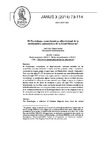El Physiologus como fuente gráfico-textual de la emblemática animalística de la Edad Moderna

Use this link to cite
http://hdl.handle.net/2183/24240
Except where otherwise noted, this item's license is described as Atribución-NoComercial-SinDerivadas 4.0 España
Collections
Metadata
Show full item recordTitle
El Physiologus como fuente gráfico-textual de la emblemática animalística de la Edad ModernaAlternative Title(s)
The Physiologus as Graphic-Textual Source of Modern Age Animal EmblematicsAuthor(s)
Date
2014Citation
García Arranz, J.J.. (2014). El Physiologus como fuente gráfico-textual de la emblemática animalística de la Edad Moderna.. Janus: estudios sobre el Siglo de Oro, 3, 73-144. https://www.janusdigital.es/articulo.htm?id=39
Abstract
[Resumen] El Physiologus, recopilación de alegorizaciones cristianas extraídas de las propiedades naturales atribuidas a ciertos animales y plantas, reales o fantásticos, compuesta en lengua griega en algún lugar del Mediterráneo oriental -Alejandría o Siria- entre los siglos II y IV de nuestra era, ha generado una vasta bibliografía desde finales del siglo XIX en torno a su origen, autoría y versiones en diversos idiomas.
Sin embargo, si exceptuamos alguna honrosa excepción, aún no se había abordado en profundidad la influencia que este opúsculo pudo llegar a ejercer en el género literario-visual de los libros de emblemas a partir del siglo XVI. Considerado habitualmente por la crítica como una fuente esencial de la vertiente animalística de la Emblemática libresca, en el presente trabajo nos proponemos un examen detallado de la verdadera incidencia que el Physiologus alcanzó tanto en las imágenes como en las interpretaciones alegóricas de los emblemas que, a priori, parecen guardar algún tipo de relación temática con aquel primitivo texto cristiano. [Abstract] The Physiologus, a collection of Christian allegories drawn from the natural properties attributed to certain animals and plants, real or fantastic, composed in Greek language somewhere in the Eastern Mediterranean -Alexandria or Syria- between the second and fourth centuries of our era, has generated a vast literature since the late 19th century around its origin, authorship and versions in different languages. However, except for a few honorable exceptions, had not yet been addressed in depth the influence that this booklet was able to exert on the literary-visual genre of books of emblems from the 16th century on. Usually considered by critics as major source of the bookish Emblematics animalistic side, in this paper we aim to address in detail the true impact of the Physiologus reached both in pictures and allegorical interpretations of the emblems which, a priori, seem to keep some kind of thematic relationship with the primitive Christian text.
Keywords
Physiologus
Zoología clásica
Naturalismo moralizante
Simbolismo animal
Emblemática
Classic zoology
Moralizing naturalism
Animal symbolism
Emblematics
Zoología clásica
Naturalismo moralizante
Simbolismo animal
Emblemática
Classic zoology
Moralizing naturalism
Animal symbolism
Emblematics
Editor version
Rights
Atribución-NoComercial-SinDerivadas 4.0 España
ISSN
2254-7290






